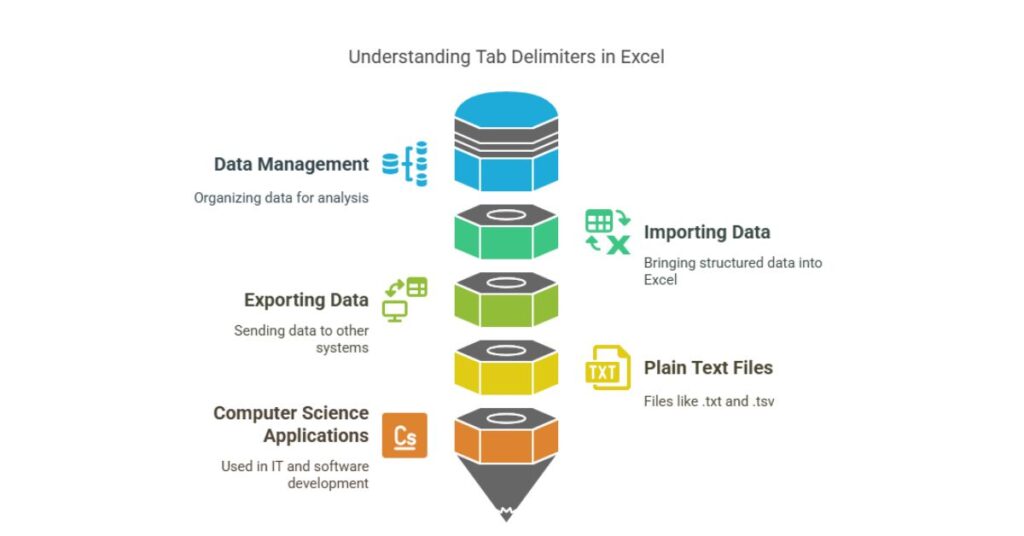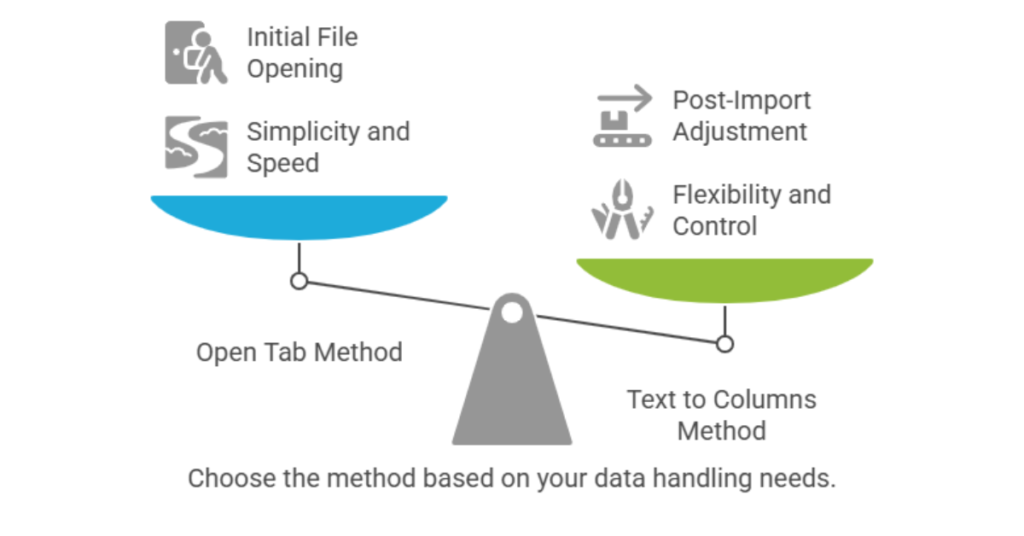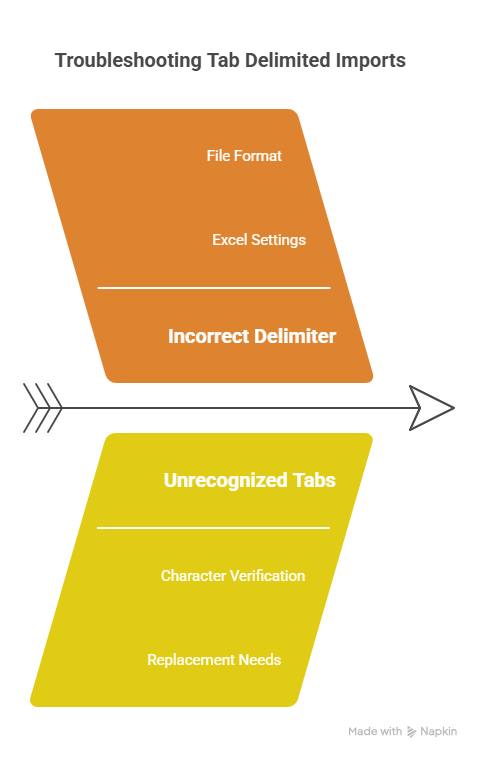Table of Contents
Introduction to Tab Delimiters in Excel

Tab Delimiter in Excel is a powerful feature used to separate values in plain text files, making data easier to manage and analyze. It plays a key role when importing or exporting structured data between systems, especially in IT and software development environments. A tab delimiter uses the tab character to split text into distinct columns. This format is commonly found in .txt or .tsv files generated by databases, logs, or third-party applications.
Computer Science Engineers often deal with large datasets, system exports, or configuration files. Using tab delimiters in Excel helps streamline data processing without the risk of misinterpreting commas or other punctuation.
Tab Delimiters in Excel : Use Cases
- Importing system logs.
- Analyzing exported database tables.
- Splitting large datasets into readable formats.
- Preparing structured input for automation scripts.
Why Use Tab Delimiters?
Tab delimiters ensure data is cleanly separated without using visible characters like commas or semicolons. They prevent conflicts when data includes punctuation. Tab delimited in Excel files also maintain compatibility across platforms and tools.
Methods to Use a Tab Delimiter in Excel
There are several ways to use tab delimiters in Excel. Each method depends on the data source and user preference.

Method 1 – Open Tab Delimited in Excel File Directly
This is the easiest way to view tab-delimited content.
- Open Excel.
- Click File > Open.
- Select the
.txtor.tsvfile. - Excel will launch the Text Import Wizard.
- Choose Delimited, then click Next.
- Check the Tab box as the delimiter.
- Click Finish to load the data into columns (HowToExcel).
Method 2 – Use Text to Columns
You can apply this method to pasted or imported data that appears in a single column.
- Select the column with tab-delimited text.
- Go to the Data tab on the ribbon.
- Click Text to Columns.
- Choose Delimited, then click Next.
- Check Tab, then click Finish (WikiHow).
This method is helpful when data has already been pasted into Excel but is not formatted correctly.
Method 3 – Use Power Query (Get & Transform)
For large or complex files, Power Query provides more control.
- Open Excel and go to the Data tab.
- Click Get Data > From File > From Text/CSV.
- Select the tab-delimited file.
- Excel will detect the delimiter automatically.
- Click Load to import the data into the worksheet .
This method is ideal for recurring imports or automation.
How to Save Data as Tab Delimited in Excel
You can also export Excel data into a tab-delimited file.
- Click File > Save As.
- Choose the location.
- In the Save as type dropdown, select Text (Tab delimited) (*.txt).
- Click Save.
This format is useful for preparing data for other applications, such as scripts or databases.
Troubleshooting Tab Delimited Imports

All Data in One Column
If Excel places all data in one column, it may be using the wrong delimiter.
- Use the Text to Columns tool and select Tab as the delimiter.
Tabs Not Recognized
Some files may use spaces or other characters instead of actual tab characters.
- Open the file in a text editor.
- Verify tabs (
\\t) are used. - Replace other characters with real tabs if needed.
Best Practices for CSE Engineers
As a professional in the IT sector, efficient data handling is critical. Here are tips to manage tab-delimited data:
- Verify delimiter type before import.
- Use Notepad++ or VS Code to inspect raw text files.
- Automate repetitive imports using Power Query.
- Avoid special characters in data that might interfere with parsing.
- Document data format for team members or system processes.
Conclusion
Using a tab delimiter in Excel is simple and effective for organizing plain text data. Whether opening a file, splitting text, or saving structured content, Excel provides flexible tools to handle tab-separated values. Mastering these methods allows Computer Science Engineers to streamline data workflows and improve productivity.